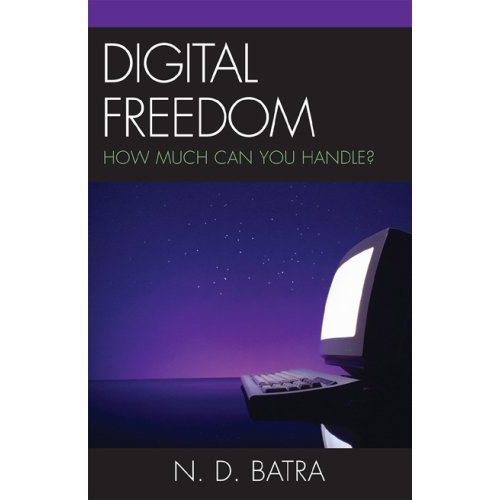CYBER AGE: From The Statesman by BY ND BATRA
What would you do if you found someone shouting: “Everything’s horrible, I want to die. Who will die with me?” That’s how Reuters read the message in a Japanese Internet chatroom after four people varying in age from 19 to 30 were found to have committed suicide in a car parked on a riverbank in Hokkaido island in northern Japan last Thursday. In the digital age, you can google-froogle anything from sushi kits to death kits, and so easily that Internet pioneers might wonder what they had wrought. Of course inventors cannot control whether people would mess up with their inventions or use them to enhance the quality of life.
In 1973 when two young computer scientists, Vinton G Cerf and Robert E Kahn, came up with the revolutionary idea of making different isolated computers talk to each other through a common language – Transmission Control Protocol/ Internet Protocol – they did not foresee the whole new world that would eventually open up. Of course there were many more people who made the Internet possible, which eventually, looking at the bright side, made Bangalore, for example, become a global outsourcing hub, among other things. Cerf and Kahn did not anticipate the Internet to become such a driving force for good – and evil – in our lives.
E-trading, e-pornography, e-surveillance, e-death and who knows what else is in store for us!Welcome to the digital age, which makes networking and sharing inevitable. For example, you might wonder how a 26-year-old man, Gerald Krein from Klamath Falls, Oregon, narrowly failed in enticing 32 women in chatrooms to commit a mass suicide on Valentine’s Day. “The common theme is that these were women who were vulnerable, who were depressed. He invited them to engage in certain sexual acts with him – and they were to hang themselves naked from a beam in his house,” Klamath County Sheriff Tim Evinger said. Had Krein succeeded, he might have used his Webcam to netcast the event – 32 women hanging naked by a roof beam. Sexual asphyxiation is a most extreme form of sexual act and in a land of extremes, of death by choice – Oregon has been toying with the idea of physician assisted suicide solution for terminal patients – it would have probably created a stir; and then been shrugged off as a bizarre event after the media had milked it dry.
A Canadian woman, probably a prospect for after life, who saw the message entitled Suicide Ideology in a chatroom and learned to her horror that another chatroom woman intended to kill not only herself but also her two children, promptly informed the police. Depressed women have been known to kill their children. At least 31 women had agreed to participate in the mass suicide, Krein told police investigators upon his arrest. Chatroom records show that Krein had been networking with women to solicit suicide since 2000. It is difficult to say at this stage of investigation how successful he has been. Nor do we know what was driving these people to commit a group suicide rather than doing it alone.
Getting out of deep depression through extreme sex, consummated finally with collective suicide by hanging: if that’s a probable explanation, then one might also understand why some people blow themselves up in their zealous commitment to jihad, which without networking and sharing wouldn’t be so blindingly enticing. Dying alone is terrible. Dying becomes easier when people die together. The Internet provides togetherness to faceless strangers.
Group suicide of strangers who meet on the Net isn’t an infrequent occurrence in Japan where hara-kiri has been an ancient ritual. In Japanese chatrooms, bulletin boards and suicide-related websites, people come together to talk about not how best to escape from their suicidal fantasies but how to execute them – sealing themselves in a coal-burning room and dying of carbon monoxide poisoning; in cars parked in remote mountain places; overdosing on camera; jumping together from high-rise buildings. Though some succeed, others end up with terrible injuries and life-long misery. Yukio Saito, a Methodist minister, who founded and oversees a suicide hotline, Phone of Life, made a very insightful remark to Reuters: “The idea of dying together is somehow reassuring. Dying alone is lonely and takes more courage. The way these suicides are carried out is very sensational for the media, and very suggestive for people who may be thinking of taking their lives.”
Think of Jim Jones of the People’s Temple, the cult leader who led 913 followers to a mass suicide death pact in 1978 in Jonestown, Guyana. Had Rev. Jones had a website, let us say, Your Guide to Death is Beautiful, with a seductive young woman giving step by step instructions and the precise time from here to thereafter, he might have attracted millions of people to an unheard of mass suicide. You could imagine what a charismatic jihadi leader might do in future when he wraps up mass suicide bombings with a noble religious cause.
Tuesday, February 22, 2005
Dark side of digital age
at Tuesday, February 22, 2005 Posted by Narain D. Batra
Subscribe to:
Post Comments (Atom)

Help! I am lost. I was searching for pc computer game and somehow ended up here. How that happened I don't know, however I do like your Blog a lot. Would you mind if I add your Blog to my favorites page so others can visit?
ReplyDeleteGo ahead and add it your favorite blogs.
ReplyDelete